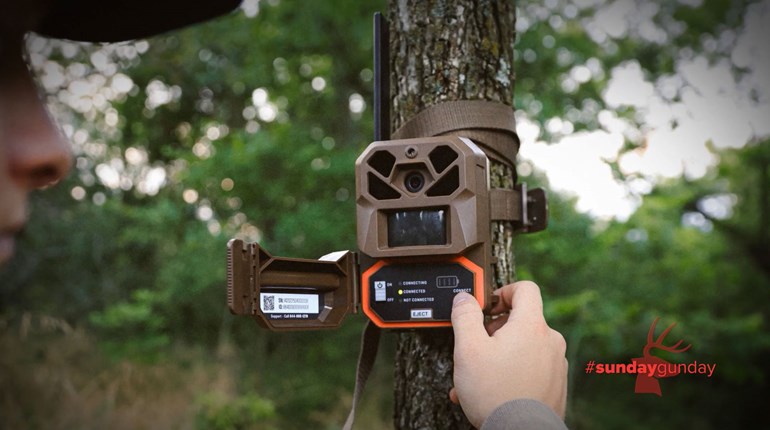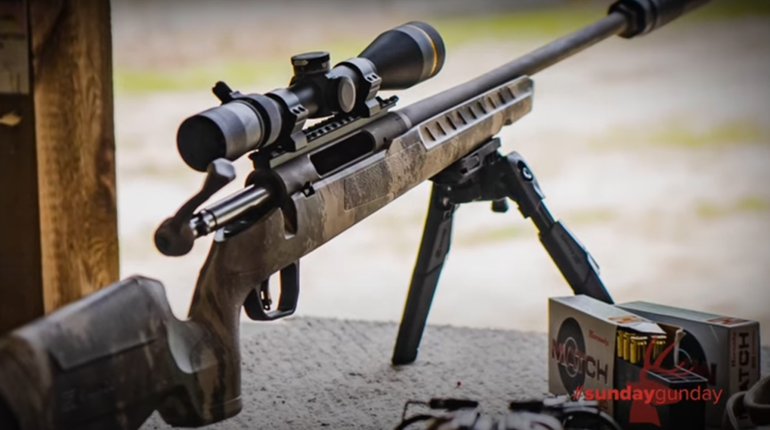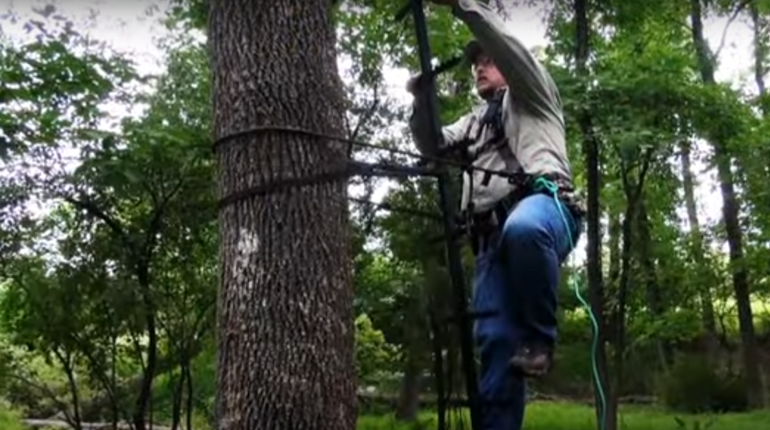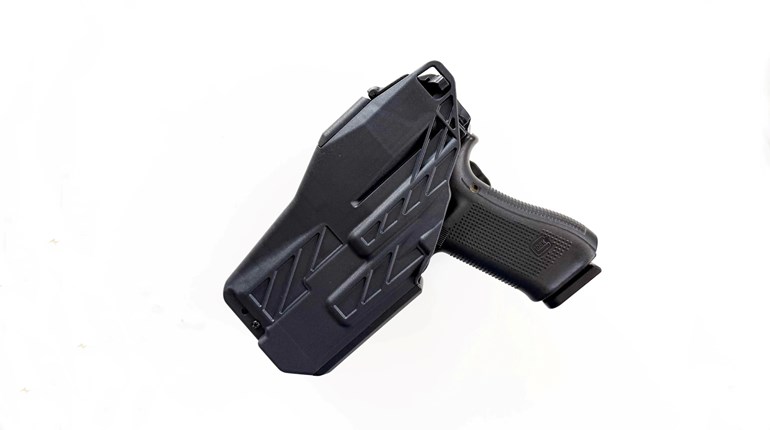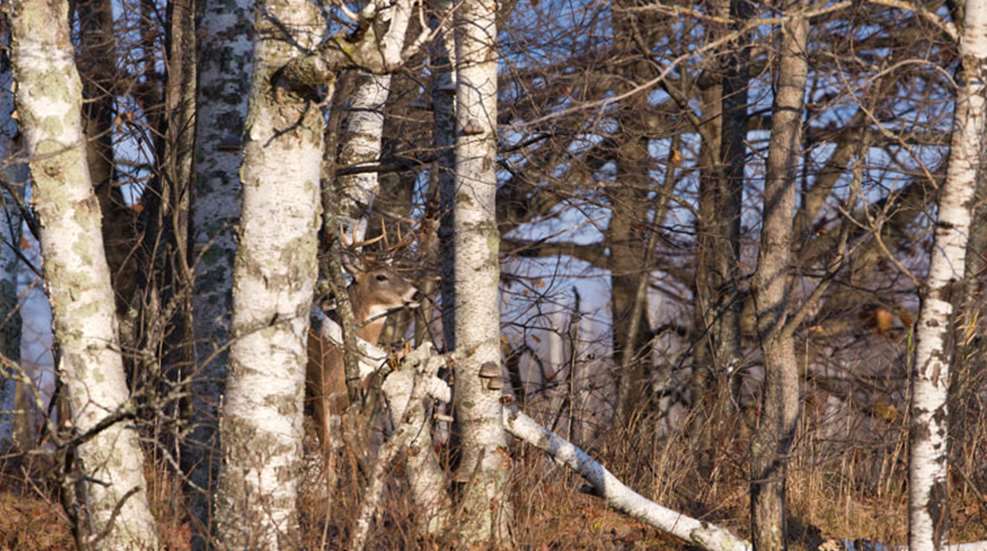
In this excerpt from his book Make Every Shot Count, American Hunter magazine’s J. Scott Olmsted offers real-life expertise on how to engage with your quarry.
First, Remember This
The game we seek needs only to drink, eat, sleep and procreate. We enter its landscape—one foreign to us—and expect, on our timetable, to seek it out, close with it and kill it. Often we outsmart it because we can find its track or determine its mating, feeding, resting and travel schedule. But regardless how much wit we bring to the game, it moves faster than we do. It smells and hears better than we do. Usually it sees better than we do. We can’t overcome all those factors, but we can minimize them.
Mindset is Crucial
Like it or not, when we enter the field we engage in combat with game. That’s not to suggest we make war with the animals we pursue. But considering the definition of combat—“any struggle or conflict; strife”—we clearly are bent on causing trouble, at least for the game.
We simply must enter the field with a practical mindset.
The curriculum at Gunsite Academy (http://www.gunsite.com/main/), a world-famous gun-handling range and training center, advances the “combat triad” as a method to accomplish this. In the triad, mindset, gun handling and marksmanship comprise a union of three elements essential to success. Of the three, mindset is the most important, for no amount of slick gun handling or supreme marksmanship will make up for careless behavior or a failure to recognize danger.
Always know the condition of your rifle. How many rounds are in the magazine? Is there a round in the chamber? Is the rifle on safe? How many rounds do you have on station (on your person in the field)? Maintain muzzle awareness at all times.
Stay mentally awake. Use all your senses. Pay attention to reflections and movement as indicators of game. Be alert to changes in shape, color, sound and smell. In bright sunlight remember it’s difficult for our eyes to adapt to severe contrast. Be sure to check the shadows. Scan tight cover constantly with your eyes. Look for an outline by recognizing what lies just beyond your immediate zone of influence. At long range, understand that game of known size may appear to you to be closer or further away, depending on terrain and vegetation.
Create distance between yourself and a threatening situation. Meeting danger unexpectedly in the form of a charging buffalo, in tight cover, negates any advantage that lies in the power, precision and range of your rifle.
In fast-moving situations, don’t forget to focus on your reticle. Under stress it’s easy to forget the fundamentals. If you train properly, muscle memory should take over in a stressful situation, so the physical attributes of shooting should take care of themselves. But, at close range, we have a tendency to simply point the gun and pull the trigger. During the hunt remind yourself: “focus, breathe, squeeze.” The last steps in the shooting process always need to be methodical.
Maintain balance. Don’t get caught flat-footed while on the move, particularly during a stalk. When contact is imminent, always take steps small enough to allow you to retreat to a “fighting” stance, if need be. Never adopt a shooting position that negates physical mobility, stability and control of your rifle. What if you need to deliver a fast follow-up shot?
How to Stalk
Use economy of movement. The ability of game to detect movement protects it against predators, including us. Speed and sudden movements are killers—not for game, but for our expectations of the hunt. Movements we make long before we are ever close to setting up for a shot can betray us.
When stalking, place your feet flatly instead of rolling from heel to toe to reduce the pressure placed on so small an area as a heel print. You’ll spread your weight over your entire footprint, and you’ll also feel twigs beneath your foot before committing the full weight of a step. As the sun rises higher, look for quieter lanes of movement. Exposed earth is always a good bet. Rock-strewn terrain, pine needles, and moss are ideal—when present—so long as you can move across the features without losing your balance.
Never step backward. It’s easy to trip when you can’t see to place your foot surely. Instead, pivot or whirl, depending on the situation. If you hear a noise to your right, pivot on the balls of your feet to begin to face that direction, the better to whirl and face a situation that develops there. When you want to face from 12 o’clock to 3 o’clock in a hurry, throw your weight to your right foot, raise your left foot, and pivot on the ball of your right foot, then step back down with your left foot, now facing 3 o’clock.
Be quiet. Perform a noise check before leaving camp. Jump up and down while wearing your gear—all of it. Listen for squeaks, and also for rattles and rubs. Silence squeaky sling swivels with oil or tape. Don’t let a loose sling swing free to snag on vegetation. Pinch a sling with your strong hand against the belly of your rifle in the suitcase carry, or with your support hand against the fore-end in the high- or low-ready position. Be aware that half-full water bottles sloshing in your pack are even louder at dusk.
When you need to free your hands, sling your rifle or lay it down. Quiet extra rounds you carry in your pockets by using extra cartridge wallets. I have a couple from Cabela’s ideal for hunting dangerous game. They are meant to ride in a pocket, and they hold five rounds each. I put five solids in one spare wallet and five expanding bullets in the other, then separate them in pockets on either side of my body. The cartridge wallet on my belt holds 10 rounds, so with this system I carry a minimum of 20 rounds on station at all times.
Visualize Success
Rehearse every day during your hunt. Before setting out in the morning, step aside with your gun where it’s quiet, and go over the physical and mental aspects of what lies before you. Snap in to shooting positions and dry-fire. Visualize the movements needed to get into any position you might need based on expected terrain and vegetation conditions. Go over an entire shot, from a few steps of movement to adopting a shooting position to recovering from recoil, reloading, rising from your position—all of it. Mental rehearsal is the best way to develop the concentration you need.
Make Every Shot Count
J. Scott Olmsted is the editor in chief of American Hunter magazine and author of Make Every Shot Count, available now from Safari Press. In the book, he imparts the knowledge, skills and attitude necessary to make every hunter the master of his rifle. From picking the right rifle, scope and bullet, to the fundamentals of marksmanship, exterior ballistics, situational awareness and shot placement, it’s all there. Learn how to adopt field-shooting positions; how to use natural and artificial rests; how to use your sling as a shooting aid, and how to carry your rifle with it and still make ready for a shot within seconds; how to make “come-ups” at long range; and how to dope the wind. Do yourself, the game and your guide a favor and read this book. www.safaripress.com













